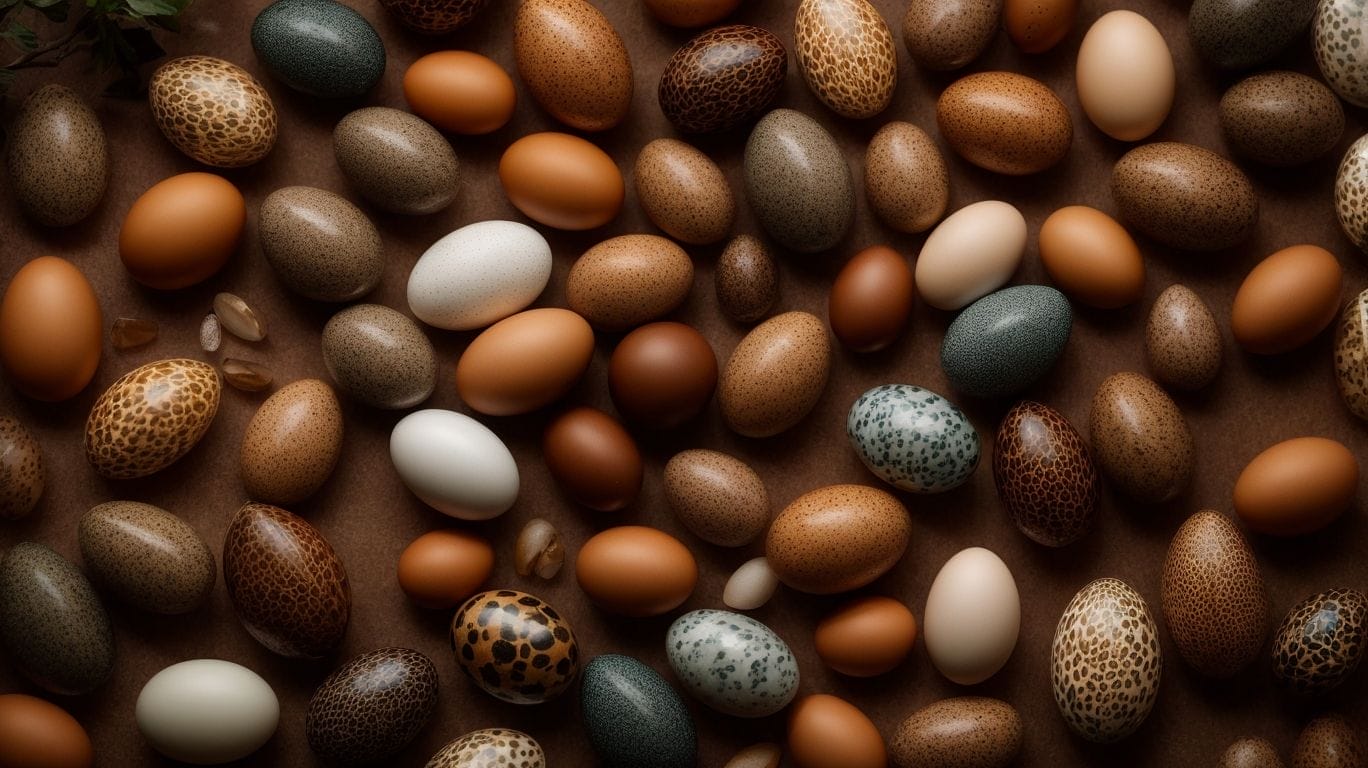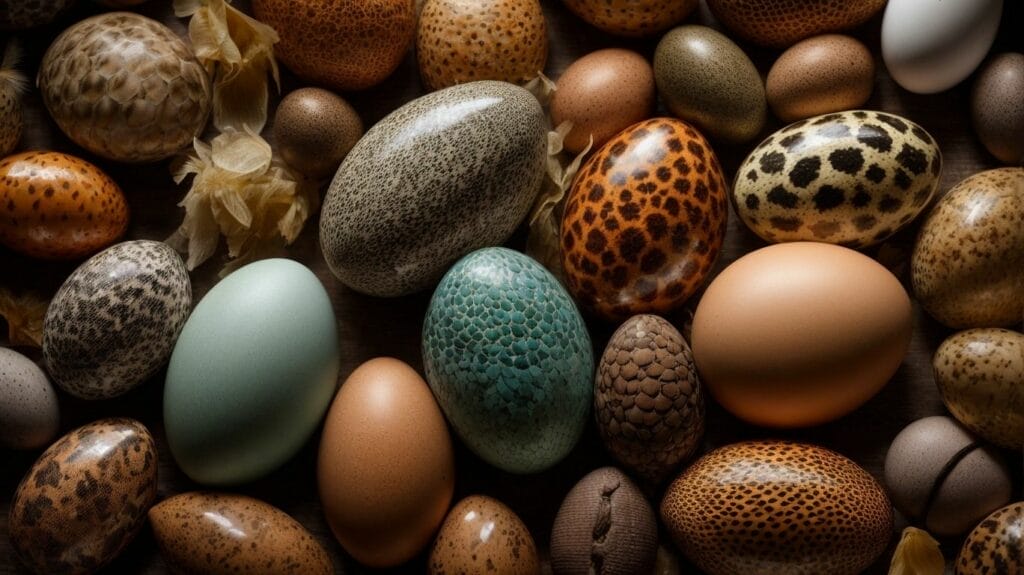Egg-laying animals, also known as oviparous animals, are fascinating creatures that reproduce by laying eggs. Various species across different animal groups employ this reproductive strategy. Understanding the concept and characteristics of egg-laying animals can provide valuable insights into their reproductive processes, physical features, and behavioral patterns.
Egg-laying animals are defined as organisms that lay eggs externally or internally, which contain the fertilized embryos that develop and hatch outside the parental body. This reproductive process is distinct from viviparous animals that give birth to live young. Examples of egg-laying animals encompass a wide range of species, including reptiles, birds, amphibians, fish, and invertebrates.
Characteristics of egg-laying animals involve their unique reproductive processes, physical features, and behavioral patterns. The reproductive process typically involves the production and fertilization of eggs internally, followed by the deposition of eggs in a suitable environment for incubation and development. The physical features of egg-laying animals can vary, but they often possess specialized reproductive organs for egg production and laying. Behavioral patterns may include nest-building, egg guarding, and attentive care during the incubation period.
Different types of animals exhibit egg-laying reproductive strategies. Reptiles, such as turtles, crocodiles, and lizards, rely on egg-laying to propagate their species. Birds, including chickens, ducks, and eagles, are renowned for their egg-laying abilities. Amphibians, like frogs and salamanders, lay eggs in aquatic environments. Fish, both freshwater and marine, also employ egg-laying as their primary reproductive method. Various invertebrates, such as insects, crustaceans, and mollusks, exhibit diverse forms of egg-laying behavior.
While egg-laying offers advantages for these species in terms of reproduction and survival, there are also disadvantages associated with this reproductive strategy. Advantages include the production of numerous offspring, increased genetic diversity, and reduced energy expenditure compared to viviparity. However, disadvantages may include increased vulnerability during the fragile egg stage, exposure to environmental risks, and the absence of parental care seen in other reproductive methods.
By delving into the world of egg-laying animals and exploring the types, characteristics, advantages, and disadvantages of this reproductive strategy, we can gain a deeper appreciation for the remarkable diversity and adaptability of the animal kingdom.
Key takeaway:
- Egg-laying animals include reptiles, birds, amphibians, fish, and invertebrates. These animals have evolved to reproduce by laying eggs rather than giving birth to live young.
- Egg-laying provides advantages such as efficient reproduction and dispersal: Eggs allow for large numbers of offspring to be produced and can be laid in diverse habitats, enhancing the survival and adaptation of species.
- Egg-laying also has disadvantages, including vulnerability to predation and exposure: Eggs are exposed to environmental conditions and predators, increasing the risk of mortality compared to live births.
What Are Egg-Laying Animals?

Photo Credits: Petnarnia.Com by Brian Wright
What’s the deal with egg-laying animals? Well, in this section, we’re diving into the fascinating world of these unique creatures. We’ll start by exploring the definition of egg-laying animals and what sets them apart from the rest. But that’s not all – we’ll also be serving up some interesting examples of these shelled creators. So get ready to crack into the secrets of what makes certain animals lay eggs!
Definition of Egg-Laying Animals
Egg-laying animals, also known as oviparous animals, are creatures that reproduce by laying eggs. The Definition of Egg-Laying Animals includes reptiles such as turtles and snakes, birds like ducks and chickens, amphibians including frogs and salamanders, fish such as salmon and cod, and various invertebrates like insects and spiders. These animals have certain characteristics that enable them to lay eggs, such as the ability to produce and develop eggs internally and possess specialized structures like egg-laying organs. The reproductive process, physical features, and behavioral patterns of egg-laying animals differ among the various types. Now, let me share a thrilling true story about an egg-laying animal. Did you know that the female green sea turtle migrates thousands of miles to lay her eggs on the same beach where she was born? It’s an amazing journey!
Examples of Egg-Laying Animals
| Examples of Egg-Laying Animals | |
| Reptiles | Turtles, crocodiles, snakes, and lizards |
| Birds | Chickens, ducks, eagles, and penguins |
| Amphibians | Frogs, toads, and salamanders |
| Fish | Salmon, trout, and herring |
| Invertebrates | Insects, such as butterflies, beetles, and bees |
One fascinating story revolves around the sea turtle, which lays its eggs on sandy beaches and returns to the same location years later. These delicate eggs endure various challenges before hatching, showcasing the remarkable journey of egg-laying animals.
Characteristics of Animals That Lay Eggs

Photo Credits: Petnarnia.Com by Stephen Garcia
Discover the fascinating world of animals that lay eggs as we delve into the characteristics that define them. From their unique reproductive process to their distinct physical features and behavioral patterns, we’ll unravel the wonders of these egg-laying creatures. So, get ready to explore the marvels of nature and uncover the secrets of these remarkable animals. Let’s dive into the intriguing realm of egg-laying species!
Reproductive Process of Egg-Laying Animals
- The reproductive process of egg-laying animals can be broken down into several steps.
- Mating: Egg-laying animals engage in reproductive behavior to fertilize the eggs.
- Egg Formation: Female animals produce eggs within their bodies through a process called oviparity.
- Egg Laying: Once the eggs are formed, female animals lay them in a suitable location for incubation and development.
- Incubation: In some species, the parent(s) provide care and protection to the eggs during the incubation period.
- Hatching: After a certain period of incubation, the eggs hatch, and the young ones emerge.
Fact: Did you know that some egg-laying animals, like turtles and crocodiles, have temperature-dependent sex determination, where the temperature during incubation determines the gender of the offspring?
Physical Features of Egg-Laying Animals
- Egg-laying animals exhibit various physical features that are well-suited to their reproductive strategy.
- One key characteristic is the presence of hard or soft shells that protect the developing embryo.
- Additionally, egg-laying animals possess an amniotic membrane surrounding the embryo, which offers both protection and necessary nutrients.
- The yolk sac serves as a source of nourishment for the growing embryo during its development.
- Most egg-laying animals undergo internal fertilization prior to laying the egg.
- A streamlined body shape is commonly observed in egg-laying animals, aiding in swimming or flying.
- Snakes and lizards possess elongated bodies that accommodate the presence of eggs.
- Birds, a specific type of egg-laying animal, possess feathers that assist in regulating their body temperature.
These physical attributes play a crucial role in supporting the successful incubation and hatching processes of eggs in egg-laying animals.
Behavioral Patterns of Egg-Laying Animals
Egg-laying animals exhibit various behavioral patterns, including nesting, incubation, brooding, and energetic investment, to ensure the survival of their offspring.
| 1. Nesting: | Many egg-laying animals, as part of their behavioral patterns, build nests to provide a safe and protected environment for their eggs. Birds, for example, construct intricate nests using twigs, leaves, and mud. |
| 2. Incubation: | Some animals, such as reptiles, actively perform incubation as part of their behavioral patterns. They regulate the temperature and humidity to promote proper development and ensure the eggs receive optimal conditions for hatching. |
| 3. Brooding: | Certain species of animals, like amphibians, exhibit brooding behavior as part of their natural patterns. They carry their eggs or embryos either externally or internally until they hatch or metamorphose. |
| 4. Energetic investment: | As part of their behavioral patterns, animals that lay eggs invest a significant amount of energy into producing and caring for their eggs. For example, female fish may guard their eggs from predators or actively fan them to maintain oxygen levels. |
The behavioral patterns of egg-laying animals, such as nesting, incubation, brooding, and energetic investment, demonstrate their adaptation and commitment toward successful reproduction and the survival of their offspring.
Types of Animals That Lay Eggs

Photo Credits: Petnarnia.Com by Jonathan Davis
Let’s dive into the fascinating world of egg-laying animals! From reptiles to birds, amphibians to fish, and even invertebrates, there exists a diverse array of creatures that possess the extraordinary ability to lay eggs. In this section, we’ll explore the various types of animals that have evolved this incredible reproductive strategy. Get ready to uncover interesting facts, intriguing adaptations, and the remarkable diversity found within each category. Prepare to be amazed by the wonders of nature and the incredible diversity of egg-laying animals!
Reptiles
Reptiles are a group of animals that lay eggs. They are ectothermic vertebrates characterized by their scaly skin and terrestrial habitats. Here is a table highlighting some examples of reptiles:
| Common Name | Scientific Name |
| Turtle | Testudines |
| Crocodile | Crocodylidae |
| Lizard | Squamata |
| Snake | Serpentes |
These reptiles have adapted to lay eggs as a means of reproduction. They rely on the heat of their environment to incubate the eggs and hatch their offspring. Reptiles play an important role in maintaining the ecological balance of various ecosystems.
Birds
Birds are a diverse group of animals that lay eggs. They belong to the class Aves and have distinctive features like feathers, beaks, and wings. Some common examples of egg-laying birds include ducks, chickens, and eagles. Birds reproduce through internal fertilization, and the female lays eggs that develop outside her body. A hard shell protects these eggs and provide a safe environment for the growing embryo. One interesting fact about birds is that they have specialized behaviors, such as building nests and incubating their eggs, to ensure the survival of their offspring.
Amphibians
Amphibians, including frogs, toads, and salamanders, are egg-laying animals that undergo a unique life cycle known as metamorphosis. They lay their eggs in water or moist environments to ensure proper development. Here is a table summarizing the characteristics and examples of amphibians:
| Type of Amphibian | Examples |
|---|---|
| Frogs | Tree frog, poison dart frog |
| Toads | American toad, cane toad |
| Salamanders | Tiger salamander, red-backed salamander |
Pro-tip: You can create a suitable habitat for amphibians in your backyard by incorporating water features and native plants. This will help attract and support their reproduction and survival.
Fish
Fish are a diverse group of animals that lay eggs. They belong to the class Osteichthyes and are known for their aquatic lifestyle. Here is a table highlighting some important information about fish that lay eggs:
| Class | Examples | Reproductive Method |
| Osteichthyes | Tuna, Salmon, Guppy | Egg-laying (Oviparous) |
Fish lay eggs as a way to reproduce. They typically release their eggs into the water, where the male fertilizes them. The eggs hatch into larvae, which eventually grow into adult fish. This reproductive strategy allows fish to produce a large number of offspring, increasing their chances of survival. Fish can be found in various aquatic environments, including freshwater and saltwater habitats. They play a crucial role in ecosystems and are a valuable food source for humans.
Invertebrates
Invertebrates are a diverse group of animals that lay eggs. They encompass a wide range of species, each with their unique characteristics. Here is a table highlighting some examples of invertebrates that lay eggs:
| Invertebrate Group | Examples of Egg-Laying Invertebrates |
|---|---|
| Insects | Butterflies, Beetles, Ants |
| Spiders | Tarantulas, Orb-weavers, Jumping Spiders |
| Mollusks | Snails, Clams, Squid |
| Crustaceans | Crabs, Lobsters, Shrimp |
| Echinoderms | Sea Stars, Sea Urchins, Sea Cucumbers |
Invertebrates have a wide range of reproductive strategies and physical features, making them a fascinating group of animals. Their ability to lay eggs allows for diverse life cycles and population growth within their respective groups.
Advantages and Disadvantages of Egg-Laying

Photo Credits: Petnarnia.Com by Henry Jones
Discover the fascinating world of egg-laying animals as we delve into the advantages and disadvantages of this unique reproductive strategy. From the remarkable benefits of egg-laying to the potential drawbacks faced by these creatures, we’ll break down the intriguing aspects of this reproductive method. So, join us as we explore the advantages and disadvantages that come with being an egg-laying animal in the animal kingdom.
Advantages of Egg-Laying
The advantages of egg-laying in animals can be significant, providing them with various benefits. Here are a few advantages of egg-laying to consider:
- Adaptability: Egg-laying allows animals to reproduce in a variety of environments, from terrestrial to aquatic, enhancing their chances of survival.
- Resource Efficiency: Egg-laying animals benefit from the fact that eggs contain all the necessary nutrients for embryo development. This reduces the need for parental care and conserves energy for other activities.
- Protection: The protective shell or membrane of eggs shields the developing embryo from predators, harsh environments, and fluctuations in temperature, offering protection and enhancing chances of survival.
- Dispersal: Eggs are portable and can be laid in multiple locations, increasing the chances of offspring spreading to new habitats and colonizing different areas, thus promoting dispersal and genetic diversity.
- Population Growth: The ability to produce a large number of offspring at once through egg-laying boosts the population size and genetic diversity of animals.
These advantages highlight the evolutionary significance and success of egg-laying animals in various ecosystems. So, next time you encounter egg-laying animals, remember the benefits they reap from this reproductive strategy.
Disadvantages of Egg-Laying
Egg-laying animals have been successful in reproducing, but this reproductive strategy also comes with its disadvantages.
- Egg-laying animals produce a limited number of eggs compared to animals that give live birth. This limits their reproductive potential.
- Exposure to Predators: Eggs are vulnerable to predation. They are often laid in exposed locations, increasing the risk of being eaten by predators.
- Dependence on External Factors: Egg-laying species are highly dependent on suitable environmental conditions for egg development, including temperature and humidity. Changes in these factors can negatively impact egg survival.
- Slow Development: The development of eggs can be slow, resulting in longer periods before offspring are produced.
Despite these disadvantages, egg-laying animals continue to thrive through various adaptations that increase successful reproduction.
Some Facts About Animals That Lay Eggs:
- ✅ Birds are warm-blooded animals that lay eggs, have feathers, and can fly. (Source: Our Team)
- ✅ Fish are cold-blooded vertebrates that lay eggs, have scales, and breathe using oxygen in the water. (Source: Our Team)
- ✅ Amphibians are cold-blooded vertebrates that can live on land and in water. They lay eggs. (Source: Our Team)
- ✅ Reptiles use the heat of the sun to keep their blood warm. Most reptiles lay eggs. (Source: Our Team)
- ✅ Insects are the largest group of living things, apart from bacteria. Most insects lay eggs and have six legs and a hard exoskeleton. (Source: Our Team)


